4.多层感知机
多层感知机
激活函数
import tensorflow as tf
import matplotlib.pyplot as plt
from matplotlib_inline import backend_inline
from IPython import display
import math
import numpy as np
import pandas as pd
def use_svg_display():
backend_inline.set_matplotlib_formats('png')
def set_figsize(figsize=(3.5, 2.5)):
use_svg_display()
plt.rcParams['figure.figsize'] = figsize
def set_axes(axes, xlabel, ylabel, xlim, ylim, xscale, yscale, legend):
"""设置matplotlib的轴"""
axes.set_xlabel(xlabel)
axes.set_ylabel(ylabel)
axes.set_xscale(xscale)
axes.set_yscale(yscale)
axes.set_xlim(xlim)
axes.set_ylim(ylim)
if legend:
axes.legend(legend)
axes.grid()
def plot(X, Y=None, xlabel=None, ylabel=None, legend=None, xlim=None,
ylim=None, xscale='linear', yscale='linear',
fmts=('-', 'm--', 'g-.', 'r:'), figsize=(3.5, 2.5), axes=None):
"""绘制数据点"""
if legend is None:
legend = []
set_figsize(figsize)
axes = axes if axes else plt.gca()
# 如果X有一个轴,输出True
def has_one_axis(X):
return (hasattr(X, "ndim") and X.ndim == 1 or isinstance(X, list)
and not hasattr(X[0], "__len__"))
if has_one_axis(X):
X = [X]
if Y is None:
X, Y = [[]] * len(X), X
elif has_one_axis(Y):
Y = [Y]
if len(X) != len(Y):
X = X * len(Y)
axes.cla()
for x, y, fmt in zip(X, Y, fmts):
if len(x):
axes.plot(x, y, fmt)
else:
axes.plot(y, fmt)
set_axes(axes, xlabel, ylabel, xlim, ylim, xscale, yscale, legend)
x = tf.Variable(tf.range(-8.0, 8.0, 0.1), dtype=tf.float32)
y = tf.nn.relu(x)
plot(x.numpy(), y.numpy(), 'x', 'relu(x)', figsize=(5, 2.5))
plt.show()
with tf.GradientTape() as t:
y = tf.nn.relu(x)
plot(x.numpy(), t.gradient(y, x).numpy(), 'x', 'grad of relu', figsize=(5, 2.5))
plt.show()
y = tf.nn.sigmoid(x)
plot(x.numpy(), y.numpy(), 'x', 'sigmoid(x)', figsize=(5, 2.5))
plt.show()
with tf.GradientTape() as t:
y = tf.nn.sigmoid(x)
plot(x.numpy(), t.gradient(y, x).numpy(), 'x', 'grad of sigmoid')
plt.show()
y = tf.nn.tanh(x)
plot(x.numpy(), y.numpy(), 'x', 'tanh(x)', figsize=(5, 2.5))
plt.show()
with tf.GradientTape() as t:
y = tf.nn.tanh(x)
plot(x.numpy(), t.gradient(y, x), 'x', 'grad of tanh', figsize=(5, 2.5))
plt.show()
多层感知机-从零开始实现#
# 加载数据集
def load_array(data_arrays, batch_size, is_train=True):
dataset = tf.data.Dataset.from_tensor_slices(data_arrays)
if is_train:
dataset = dataset.shuffle(buffer_size=1000)
dataset = dataset.batch(batch_size)
return dataset
def load_data_fashion_mnist(batch_size, resize=None):
mnist_train, mnist_test = tf.keras.datasets.fashion_mnist.load_data()
# 将所有数字除以255, 使所有像素值介于0-1之间,在最后添加一个批处理维度
# 并将所有标签转换为int32
process = lambda X, y: (tf.expand_dims(X, axis=3) / 255, tf.cast(y, dtype='int32'))
resize_fn = lambda X, y: (tf.image.resize_with_pad(X, resize, resize) if resize else X, y)
return (
tf.data.Dataset.from_tensor_slices(process(*mnist_train)).batch(batch_size).shuffle(len(mnist_train[0])).map(resize_fn),
tf.data.Dataset.from_tensor_slices(process(*mnist_test)).batch(batch_size).map(resize_fn)
)
batch_size = 256
train_iter, test_iter = load_data_fashion_mnist(batch_size)
# 初始化模型参数
num_inputs, num_outputs, num_hiddens = 784, 10, 256
W1 = tf.Variable(tf.random.normal(shape=(num_inputs, num_hiddens), mean=0, stddev=0.01))
b1 = tf.Variable(tf.zeros(num_hiddens))
W2 = tf.Variable(tf.random.normal(shape=(num_hiddens, num_outputs), mean=0, stddev=0.01))
b2 = tf.Variable(tf.zeros(num_outputs))
params = [W1, b1, W2, b2]
# 激活函数
def relu(x):
return tf.math.maximum(x, 0)
# 模型
def net(X):
X = tf.reshape(X, (-1, num_inputs))
H = relu(tf.matmul(X, W1) + b1)
return tf.matmul(H, W2) + b2
# 损失函数
def loss(y_hat, y):
# 如果输入的是一个 logit 值(值域范围 [-∞, +∞] ),则应该设置 from_logits=True
# 如果输入的是一个 logit 值(值域范围 [-∞, +∞] ),则应该设置 from_logits=True
return tf.losses.sparse_categorical_crossentropy(y, y_hat, from_logits=True)
# 训练
def sgd(params, grads, lr, batch_size):
for param, grad in zip(params, grads):
param.assign_sub(lr * grad / batch_size)
def accuracy(y_hat, y):
if len(y_hat.shape) > 1 and y_hat.shape[1] > 1:
y_hat = tf.argmax(y_hat, axis=1)
cmp = tf.cast(y_hat, y.dtype) == y
return float(tf.reduce_sum(tf.cast(cmp, y.dtype)))
class Updater:
def __init__(self, params, lr):
self.params = params
self.lr = lr
def __call__(self, batch_size, grads):
sgd(self.params, grads, self.lr, batch_size)
class Animator:
def __init__(self, xlabel=None, ylabel=None, legend=None, xlim=None, ylim=None, xscale='linear', yscale='linear',
fmts=('-', 'm--', 'g-.', 'r:'), nrows=1, ncols=1, figsize=(3.5, 2.5)):
# 增量地绘制多条线
if legend is None:
legend = []
use_svg_display()
self.fig, self.axes = plt.subplots(nrows, ncols, figsize=figsize)
if nrows * ncols == 1:
self.axes = [self.axes, ]
# 使用lambda函数捕获参数
self.config_axes = lambda: set_axes(self.axes[0], xlabel, ylabel, xlim, ylim, xscale, yscale, legend)
self.X, self.Y, self.fmts = None, None, fmts
def add(self, x, y):
# 向图中添加多个数据点
if not hasattr(y, "__len__"):
y = [y]
n = len(y)
if not hasattr(x, "__len__"):
x = [x] * n
if not self.X:
self.X = [[] for _ in range(n)]
if not self.Y:
self.Y = [[] for _ in range(n)]
for i, (a, b) in enumerate(zip(x, y)):
if a is not None and b is not None:
self.X[i].append(a)
self.Y[i].append(b)
self.axes[0].cla()
for x, y, fmt in zip(self.X, self.Y, self.fmts):
self.axes[0].plot(x, y, fmt)
self.config_axes()
display.display(self.fig)
display.clear_output(wait=True)
def train_epoch_ch3(net, train_iter, loss, updater):
metric = Accumulator(3)
for X, y in train_iter:
with tf.GradientTape() as tape:
y_hat = net(X)
if isinstance(loss, tf.keras.losses.Loss):
l = loss(y, y_hat)
else:
l = loss(y_hat, y)
if isinstance(updater, tf.keras.optimizers.Optimizer):
params = net.trainable_variables
grads = tape.gradient(l, params)
updater.apply_gradients(zip(grads, params))
else:
updater(X.shape[0], tape.gradient(l, updater.params))
# keras的loss默认返回一个批量的平均损失
l_sum = l * float(tf.size(y)) if isinstance(loss, tf.keras.losses.Loss) else tf.reduce_sum(l)
metric.add(l_sum, accuracy(y_hat, y), tf.size(y))
return metric[0] / metric[2], metric[1] / metric[2]
class Accumulator:
def __init__(self, n):
self.data = [0.0] * n
def add(self, *args):
self.data = [a + float(b) for a, b in zip(self.data, args)]
def reset(self):
self.data = [0.0] * len(self.data)
def __getitem__(self, idx):
return self.data[idx]
def evaluate_accuracy(net, data_iter):
metric = Accumulator(2)
for X, y in data_iter:
metric.add(accuracy(net(X), y), tf.size(y))
return metric[0] / metric[1]
def train_ch3(net, train_iter, test_iter, loss, num_epochs, updater):
animator = Animator(xlabel='epoch', xlim=[1, num_epochs], ylim=[0.3, 0.9], legend=['train loss', 'train_acc', 'test_acc'])
for epoch in range(num_epochs):
train_metrics = train_epoch_ch3(net, train_iter, loss, updater)
test_acc = evaluate_accuracy(net, test_iter)
animator.add(epoch+1, train_metrics + (test_acc,))
train_loss, train_acc = train_metrics
assert train_loss < 0.5, train_loss
assert train_acc <= 1 and train_acc > 0.7, train_acc
assert test_acc <=1 and test_acc > 0.7, test_acc
num_epochs, lr = 10, 0.1
updater = Updater([W1, W2, b1, b2], lr)
train_ch3(net, train_iter, test_iter, loss, num_epochs, updater)
def get_fashion_mnist_labels(labels):
text_labels = ['t-shirt', 'trouser', 'pullover', 'dress', 'coat', 'sandal', 'shirt', 'sneaker', 'bag', 'ankle boot']
return [text_labels[int(i)] for i in labels]
def show_images(imgs, num_rows, num_cols, titles=None, scale=1.5):
figsize = (num_cols * scale, num_rows * scale)
_, axes = plt.subplots(num_rows, num_cols, figsize=figsize)
axes = axes.flatten()
for i, (ax, img) in enumerate(zip(axes, imgs)):
ax.imshow(img.numpy())
ax.axes.get_xaxis().set_visible(False)
ax.axes.get_yaxis().set_visible(False)
if titles:
ax.set_title(titles[i])
plt.show()
return axes
def predict_ch3(net, test_iter, n=6):
for X, y in test_iter:
break
trues = get_fashion_mnist_labels(y)
preds = get_fashion_mnist_labels(tf.argmax(net(X), axis=1))
titles = [true + '\n' + pred for true, pred in zip(trues, preds)]
show_images(tf.reshape(X[0:n], (n, 28, 28)), 1, n, titles=titles[0:n])
predict_ch3(net, test_iter)
多层感知机的简洁实现
net = tf.keras.models.Sequential([
tf.keras.layers.Flatten(),
tf.keras.layers.Dense(256, activation='relu'),
tf.keras.layers.Dense(10)
])
batch_size, lr, num_epochs = 256, 0.1, 10
loss = tf.keras.losses.SparseCategoricalCrossentropy(from_logits=True)
trainer = tf.keras.optimizers.SGD(learning_rate=lr)
train_iter, test_iter = load_data_fashion_mnist(batch_size)
train_ch3(net, train_iter, test_iter, loss, num_epochs, trainer)
模型选择、欠拟合和过拟合
训练误差(training error)是指, 模型在训练数据集上计算得到的误差。 泛化误差(generalization error)是指, 模型应用在同样从原始样本的分布中抽取的无限多数据样本时,模型误差的期望。
影响因素:模型复杂性、数据集大小。
max_degree = 20 # 多项式的最大阶数
n_train, n_test = 100, 100 # 训练集和测试集的大小
true_w = np.zeros(max_degree) # 分配空间
true_w[:4] = np.array([5, 1.2, -3.4, 5.6])
features = np.random.normal(size=(n_train + n_test, 1))
np.random.shuffle(features)
poly_features = np.power(features, np.arange(max_degree).reshape(1, -1))
for i in range(max_degree):
poly_features[:, i] /= math.gamma(i+1) # gamma(n) = (n-1)!
# labels的维度:(n_train+n_test,)
labels = np.dot(poly_features, true_w)
labels += np.random.normal(scale=0.1, size=labels.shape)
# ndarray转换为tensor
true_w, features, poly_features, labels = [tf.constant(x, dtype=tf.float32) for x in [true_w, features, poly_features, labels]]
features[:2], poly_features[:2, :], labels[:2]
"""
(<tf.Tensor: shape=(2, 1), dtype=float32, numpy=
array([[-0.58063686],
[ 1.7074897 ]], dtype=float32)>,
<tf.Tensor: shape=(2, 20), dtype=float32, numpy=
array([[ 1.0000000e+00, -5.8063686e-01, 1.6856958e-01, -3.2625902e-02,
4.7359504e-03, -5.4997351e-04, 5.3222480e-05, -4.4147046e-06,
3.2041754e-07, -2.0671804e-08, 1.2002811e-09, -6.3357042e-11,
3.0656194e-12, -1.3692397e-13, 5.6787931e-15, -2.1982110e-16,
7.9772645e-18, -2.7246435e-19, 8.7890468e-21, -2.6859182e-22],
[ 1.0000000e+00, 1.7074897e+00, 1.4577607e+00, 8.2970381e-01,
3.5417768e-01, 1.2095095e-01, 3.4420419e-02, 8.3960732e-03,
1.7920262e-03, 3.3998516e-04, 5.8052115e-05, 9.0112180e-06,
1.2822135e-06, 1.6841281e-07, 2.0540224e-08, 2.3381481e-09,
2.4952276e-10, 2.5062209e-11, 2.3774147e-12, 2.1365323e-13]],
dtype=float32)>,
<tf.Tensor: shape=(2,), dtype=float32, numpy=array([3.6991472, 6.503802 ], dtype=float32)>)
"""
# 对模型进行训练和测试
def evaluate_loss(net, data_iter, loss):
# 评估给定数据集上模型的损失
metric = Accumulator(2) # 损失的总和,样本数量
for X, y in data_iter:
l = loss(net(X), y)
metric.add(tf.reduce_sum(l), tf.size(l))
return metric[0] / metric[1]
def train(train_features, test_features, train_labels, test_labels, num_epochs=400):
loss = tf.losses.MeanSquaredError()
input_shape = train_features.shape[-1]
# 不设置偏置,因为我们已经在多项式中实现了它
net = tf.keras.Sequential()
net.add(tf.keras.layers.Dense(1, use_bias=False))
batch_size = min(10, train_labels.shape[0])
train_iter = load_array((train_features, train_labels), batch_size)
test_iter = load_array((test_features, test_labels), batch_size, is_train=False)
trainer = tf.keras.optimizers.SGD(learning_rate=0.01)
animator = Animator(xlabel='epoch', ylabel='loss', yscale='log', xlim=[1, num_epochs], ylim=[1e-3,1e2], legend=['train', 'test'])
for epoch in range(num_epochs):
train_epoch_ch3(net, train_iter, loss, trainer)
if epoch == 0 or (epoch+1) % 20 == 0:
animator.add(epoch+1, (evaluate_loss(net, train_iter, loss), evaluate_loss(net, test_iter, loss)))
print('weight:', net.get_weights()[0].T)
# 从多项式特征中选择前4个维度
train(poly_features[:n_train, :4], poly_features[n_train:, :4], labels[:n_train], labels[n_train:])
"""
weight: [[ 5.0081244 1.1937299 -3.4142315 5.6134424]]
"""
# 从多项式特征中选择前2个维度,即1和x
train(poly_features[:n_train, :2], poly_features[n_train:, :2],
labels[:n_train], labels[n_train:])
"""
weight: [[3.251812 3.4502485]]
"""
# 从多项式特征中选取所有维度
train(poly_features[:n_train, :], poly_features[n_train:, :],
labels[:n_train], labels[n_train:], num_epochs=1500)
"""
weight: [[ 5.0046334 1.242833 -3.403969 5.3268485 0.03495206 0.85826844
-0.13661306 0.34501278 0.29974663 0.02613247 0.45817637 0.1071128
0.09115538 0.43958995 0.1796739 -0.00679749 0.2960214 0.05597335
0.14703643 0.11690664]]
"""
权重衰减
在训练参数化机器学习模型时, 权重衰减(weight decay)是最广泛使用的正则化的技术之一, 它通常也被称为L2正则化。
def synthetic_data(w, b, num_examples):
X = tf.zeros((num_examples, w.shape[0]))
X += tf.random.normal(shape=X.shape)
y = tf.matmul(X, tf.reshape(w, (-1, 1))) + b
y += tf.random.normal(shape=y.shape, stddev=0.01)
y = tf.reshape(y, (-1, 1))
return X, y
n_train, n_test, num_inputs, batch_size = 20, 100, 200, 5
true_w, true_b = tf.ones((num_inputs, 1)) * 0.01, 0.05
train_data = synthetic_data(true_w, true_b, n_train)
train_iter = load_array(train_data, batch_size)
test_data = synthetic_data(true_w, true_b, n_test)
test_iter = load_array(test_data, batch_size, is_train=False)
# 初始化模型参数
def init_params():
w = tf.Variable(tf.random.normal(mean=1, shape=(num_inputs, 1)))
b = tf.Variable(tf.zeros(shape=(1,)))
return [w, b]
def l2_penalty(w):
return tf.reduce_sum(tf.pow(w, 2)) / 2
def linreg(X, w, b):
return tf.matmul(X, w) + b
def squared_loss(y_hat, y):
return (y_hat - tf.reshape(y, y_hat.shape)) ** 2 / 2
def train(lambd):
w, b = init_params()
net, loss = lambda X: linreg(X, w, b), squared_loss
num_epochs, lr = 100, 0.003
animator = Animator(xlabel='epochs', ylabel='loss', yscale='log', xlim=[5, num_epochs], legend=['train', 'test'])
for epoch in range(num_epochs):
for X, y in train_iter:
with tf.GradientTape() as tape:
# 增加了L2范数惩罚项
# 广播机制是l2_penalty(w)成为一个长度为batch_size的向量
l = loss(net(X), y) + lambd * l2_penalty(w)
grads = tape.gradient(l, [w, b])
sgd([w, b], grads, lr, batch_size)
if (epoch + 1) % 5 == 0:
animator.add(epoch+1, (evaluate_loss(net, train_iter, loss), evaluate_loss(net, test_iter, loss)))
print('w的L2范数是:', tf.norm(w).numpy())
# 忽略正则化直接训练
train(lambd=0)
"""
w的L2范数是: 18.655033
"""
# 使用权重衰减
train(lambd=3)
# 简洁实现
def train_concise(wd):
net = tf.keras.models.Sequential()
net.add(tf.keras.layers.Dense(1, kernel_regularizer=tf.keras.regularizers.l2(wd)))
net.build(input_shape=(1, num_inputs))
w, b = net.trainable_variables
loss = tf.keras.losses.MeanSquaredError()
num_epochs, lr = 100, 0.003
trainer = tf.keras.optimizers.SGD(learning_rate=lr)
animator = Animator(xlabel='epochs', ylabel='loss', yscale='log', xlim=[5, num_epochs], legend=['train', 'test'])
for epoch in range(num_epochs):
for X, y in train_iter:
with tf.GradientTape() as tape:
# tf.keras需要为自定义训练代码手动添加损失
l = loss(net(X), y) + net.losses
grads = tape.gradient(l, net.trainable_variables)
trainer.apply_gradients(zip(grads, net.trainable_variables))
if (epoch+1) % 5 == 0:
animator.add(epoch+1, (evaluate_loss(net, train_iter, loss), evaluate_loss(net, test_iter, loss)))
print('w的L2范数是:', tf.norm(net.get_weights()[0]).numpy())
train_concise(0)
"""
w的L2范数是: 1.4163884
"""
train_concise(3)
"""
w的L2范数是: 0.023434483
"""
Dropout
在标准暂退法正则化中,通过按保留(未丢弃)的节点的分数进行规范化来消除每一层的偏差.
def dropout_layer(X, dropout):
assert 0 <= dropout <= 1
# 在本情况中,所有元素都被丢弃
if dropout == 1:
return tf.zeros_like(X)
# 在本情况中,所有元素都被保留
if dropout == 0:
return X
mask = tf.random.uniform(shape=tf.shape(X), minval=0, maxval=1) < 1 - dropout
return tf.cast(mask, dtype=tf.float32) * X / (1.0 - dropout)
X = tf.reshape(tf.range(16, dtype=tf.float32), (2, 8))
print(X)
print(dropout_layer(X, 0))
print(dropout_layer(X, 0.5))
print(dropout_layer(X, 1))
"""
tf.Tensor(
[[ 0. 1. 2. 3. 4. 5. 6. 7.]
[ 8. 9. 10. 11. 12. 13. 14. 15.]], shape=(2, 8), dtype=float32)
tf.Tensor(
[[ 0. 1. 2. 3. 4. 5. 6. 7.]
[ 8. 9. 10. 11. 12. 13. 14. 15.]], shape=(2, 8), dtype=float32)
tf.Tensor(
[[ 0. 0. 4. 6. 8. 0. 12. 14.]
[ 0. 0. 0. 0. 0. 0. 0. 30.]], shape=(2, 8), dtype=float32)
tf.Tensor(
[[0. 0. 0. 0. 0. 0. 0. 0.]
[0. 0. 0. 0. 0. 0. 0. 0.]], shape=(2, 8), dtype=float32)
"""
# 定义模型参数
num_outputs, num_hiddens1, num_hiddens2 = 10, 256, 256
# 定义模型
dropout1, dropout2 = 0.2, 0.5
class Net(tf.keras.Model):
def __init__(self, num_outputs, num_hiddens1, num_hiddens2):
super().__init__()
self.input_layer = tf.keras.layers.Flatten()
self.hidden1 = tf.keras.layers.Dense(num_hiddens1, activation='relu')
self.hidden2 = tf.keras.layers.Dense(num_hiddens2, activation='relu')
self.output_layer = tf.keras.layers.Dense(num_outputs)
def call(self, inputs, training=None):
x = self.input_layer(inputs)
x = self.hidden1(x)
# 只有在训练时才是用dropout
if training:
# 在第一个全连接层之后添加一个dropout层
x = dropout_layer(x, dropout1)
x = self.hidden2(x)
if training:
# 在第二个全连接层之后添加一个dropout层
x = dropout_layer(x, dropout2)
x = self.output_layer(x)
return x
# 训练和测试
tf.keras.backend.clear_session()
net = Net(num_outputs, num_hiddens1, num_hiddens2)
num_epochs, lr, batch_size = 10, 0.5, 256
loss = tf.keras.losses.SparseCategoricalCrossentropy(from_logits=True)
train_iter, test_iter = load_data_fashion_mnist(batch_size)
trainer = tf.keras.optimizers.SGD(learning_rate=lr)
train_ch3(net, train_iter, test_iter, loss, num_epochs, trainer)
# 简洁实现
net = tf.keras.models.Sequential([
tf.keras.layers.Flatten(),
tf.keras.layers.Dense(256, activation=tf.nn.relu),
tf.keras.layers.Dropout(dropout1),
tf.keras.layers.Dense(256, activation=tf.nn.relu),
tf.keras.layers.Dropout(dropout2),
tf.keras.layers.Dense(10)
])
trainer = tf.keras.optimizers.SGD(learning_rate=lr)
train_ch3(net, train_iter, test_iter, loss, num_epochs, trainer)
前向传播、反向传播和计算图
- 前向传播
- 反向传播
梯度消失与梯度爆炸
x = tf.Variable(tf.range(-8.0, 8.0, 0.1))
with tf.GradientTape() as t:
y = tf.nn.sigmoid(x)
plot(x.numpy(), [y.numpy(), t.gradient(y, x).numpy()], legend=['sigmoid', 'gradient'], figsize=(4.5, 2.5))
plt.show()
M = tf.random.normal((4, 4))
print('一个矩阵 \n', M)
for i in range(100):
M = tf.matmul(M, tf.random.normal((4, 4)))
print('乘以100个矩阵后 \n', M.numpy())
"""
一个矩阵
tf.Tensor(
[[-1.2109797 -0.48044246 -0.44670394 0.6837259 ]
[-0.58179045 -1.6397674 0.16387863 0.02224089]
[-2.3904455 0.92026275 1.9622763 0.32071215]
[ 0.97533286 0.49989635 1.8031533 -1.7435907 ]], shape=(4, 4), dtype=float32)
乘以100个矩阵后
[[-3.9594726e+23 -2.6864426e+24 1.0439507e+24 3.5524820e+24]
[-2.8748631e+23 -1.9505506e+24 7.5798349e+23 2.5793578e+24]
[-3.4308350e+23 -2.3277707e+24 9.0457068e+23 3.0781834e+24]
[ 5.9073450e+23 4.0080446e+24 -1.5575240e+24 -5.3001329e+24]]
"""
预测房价
import hashlib
import os
import tarfile
import zipfile
import requests
# 读取数据集
DATA_HUB = dict()
DATA_URL = 'http://d2l-data.s3-accelerate.amazonaws.com/'
def download(name, cache_dir=os.path.join('..', 'data')):
assert name in DATA_HUB, f'{name}不存在于{DATA_HUB}'
url, sha1_hash = DATA_HUB[name]
os.makedirs(cache_dir, exist_ok=True)
fname = os.path.join(cache_dir, url.split('/')[-1])
if os.path.exists(fname):
sha1 = hashlib.sha1()
with open(fname, 'rb') as f:
while True:
data = f.read(1048576)
if not data:
break
sha1.update(data)
if sha1.hexdigest() == sha1_hash:
return fname # 命中缓存
print(f'正在从{url}下载{fname}...')
r = requests.get(url, stream=True, verify=True)
with open(fname, 'wb') as f:
f.write(r.content)
return fname
def download_extract(name, folder=None):
fname = download(name)
base_dir = os.path.dirname(fname)
data_dir, ext = os.path.splitext(fname)
if ext == '.zip':
fp = zipfile.ZipFile(fname, 'r')
elif ext in ('.tar', '.gz'):
fp = tarfile.open(fname, 'r')
else:
assert False, '只有zip/tar文件可以被解压缩'
fp.extractall(base_dir)
return os.path.join(base_dir, folder) if folder else data_dir
def download_all():
for name in DATA_HUB:
download(name)
DATA_HUB['kaggle_house_train'] = (DATA_URL + 'kaggle_house_pred_train.csv', '585e9cc93e70b39160e7921475f9bcd7d31219ce')
DATA_HUB['kaggle_house_test'] = (DATA_URL + 'kaggle_house_pred_test.csv', 'fa19780a7b011d9b009e8bff8e99922a8ee2eb90')
train_data = pd.read_csv(download('kaggle_house_train'))
test_data = pd.read_csv(download('kaggle_house_test'))
"""
正在从http://d2l-data.s3-accelerate.amazonaws.com/kaggle_house_pred_train.csv下载..\data\kaggle_house_pred_train.csv...
正在从http://d2l-data.s3-accelerate.amazonaws.com/kaggle_house_pred_test.csv下载..\data\kaggle_house_pred_test.csv...
"""
print(train_data.shape)
print(test_data.shape)
"""
(1460, 81)
(1459, 80)
"""
print(train_data.iloc[:4, [0, 1, 2, 3, -3, -2, -1]])
"""
Id MSSubClass MSZoning LotFrontage SaleType SaleCondition SalePrice
0 1 60 RL 65.0 WD Normal 208500
1 2 20 RL 80.0 WD Normal 181500
2 3 60 RL 68.0 WD Normal 223500
3 4 70 RL 60.0 WD Abnorml 140000
"""
all_features = pd.concat((train_data.iloc[:, 1:-1], test_data.iloc[:, 1:]))
# 数据预处理
# 若无法获得测试数据,则可根据训练数据计算均值和标准差、
numeric_features = all_features.dtypes[all_features.dtypes != 'object'].index
all_features[numeric_features] = all_features[numeric_features].apply(lambda x: (x - x.mean()) / (x.std()))
# 在标准化数据之后,所有均值消失,因此我们可以将缺失值设置为0
all_features[numeric_features] = all_features[numeric_features].fillna(0)
# “Dummy_na=True”将“na”(缺失值)视为有效的特征值,并为其创建指示符特征
all_features = pd.get_dummies(all_features, dummy_na=True)
all_features.shape
"""
(2919, 331)
"""
n_train = train_data.shape[0]
train_features = tf.constant(all_features[:n_train].values, dtype=tf.float32)
test_features = tf.constant(all_features[n_train:].values, dtype=tf.float32)
train_labels = tf.constant(train_data.SalePrice.values.reshape(-1, 1), dtype=tf.float32)
# 训练
loss = tf.keras.losses.MeanSquaredError()
def get_net(weight_decay):
net = tf.keras.models.Sequential()
net.add(tf.keras.layers.Dense(1, kernel_regularizer=tf.keras.regularizers.l2(weight_decay)))
return net
def log_rmse(y_true, y_pred):
# 为了在取对数时进一步稳定该值,将小于1的值设置为1
clipped_preds = tf.clip_by_value(y_pred, 1, float('inf'))
return tf.sqrt(tf.reduce_mean(loss(tf.math.log(y_true), tf.math.log(clipped_preds))))
def train(net, train_features, train_labels, test_features, test_labels, num_epochs, learning_rate, batch_size):
train_ls, test_ls = [], []
train_iter = load_array((train_features, train_labels), batch_size)
# 这里使用Adam优化算法
optimizer = tf.keras.optimizers.Adam(learning_rate)
net.compile(loss=loss, optimizer=optimizer)
for epoch in range(num_epochs):
for X, y in train_iter:
with tf.GradientTape() as tape:
y_hat = net(X)
l = loss(y, y_hat)
params = net.trainable_variables
grads = tape.gradient(l, params)
optimizer.apply_gradients(zip(grads, params))
train_ls.append(log_rmse(train_labels, net(train_features)))
if test_labels is not None:
test_ls.append(log_rmse(test_labels, net(test_features)))
return train_ls, test_ls
# K折交叉验证
def get_k_fold_data(k, i, X, y):
assert k > 1
fold_size = X.shape[0] // k
X_train, y_train = None, None
for j in range(k):
idx = slice(j * fold_size, (j+1) * fold_size)
X_part, y_part = X[idx, :], y[idx]
if j == i:
X_valid, y_valid = X_part, y_part
elif X_train is None:
X_train, y_train = X_part, y_part
else:
X_train = tf.concat([X_train, X_part], 0)
y_train = tf.concat([y_train, y_part], 0)
return X_train, y_train, X_valid, y_valid
def k_fold(k, X_train, y_train, num_epochs, learning_rate, weight_decay, batch_size):
train_l_sum, valid_l_sum = 0, 0
for i in range(k):
data = get_k_fold_data(k, i, X_train, y_train)
net = get_net(weight_decay)
train_ls, valid_ls = train(net, *data, num_epochs, learning_rate, batch_size)
train_l_sum += train_ls[-1]
valid_l_sum += valid_ls[-1]
if i == 0:
plot(list(range(1, num_epochs+1)), [train_ls, valid_ls], xlabel='epoch', ylabel='rmse', xlim=[1, num_epochs], legend=['train', 'valid'], yscale='log')
print(f'折{i+1},训练log rmse {float(train_ls[-1]):f},验证log rmse {float(valid_ls[-1]):f}')
return train_l_sum / k, valid_l_sum / k
# 模型选择
k, num_epochs, lr, weight_decay, batch_size = 5, 100, 5, 0, 64
train_l, valid_l = k_fold(k, train_features, train_labels, num_epochs, lr, weight_decay, batch_size)
print(f'{k}-折验证: 平均训练log rmse: {float(train_l):f}', f'平均验证log rmse: {float(valid_l):f}')
"""
折1,训练log rmse 0.169379,验证log rmse 0.155865
折2,训练log rmse 0.162185,验证log rmse 0.188749
折3,训练log rmse 0.163705,验证log rmse 0.168569
折4,训练log rmse 0.167645,验证log rmse 0.154788
折5,训练log rmse 0.163938,验证log rmse 0.183622
5-折验证: 平均训练log rmse: 0.165370 平均验证log rmse: 0.170319
"""
作者:lotuslaw
出处:https://www.cnblogs.com/lotuslaw/p/17323892.html
版权:本作品采用「署名-非商业性使用-相同方式共享 4.0 国际」许可协议进行许可。

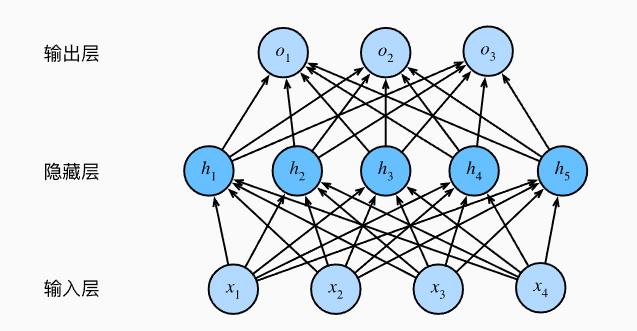


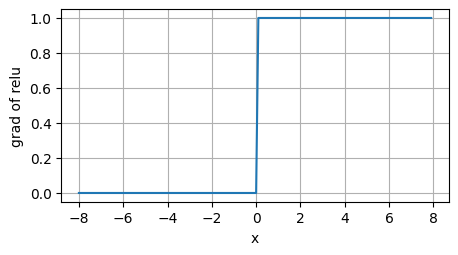
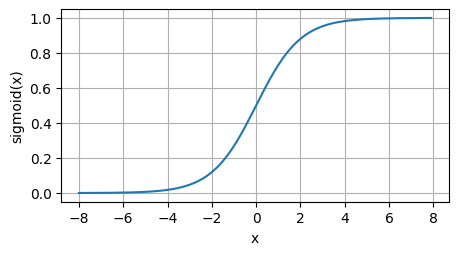
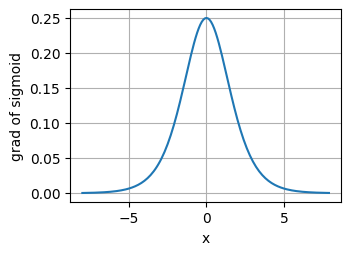

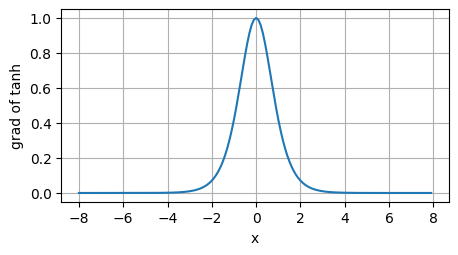


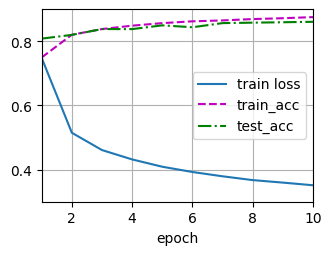
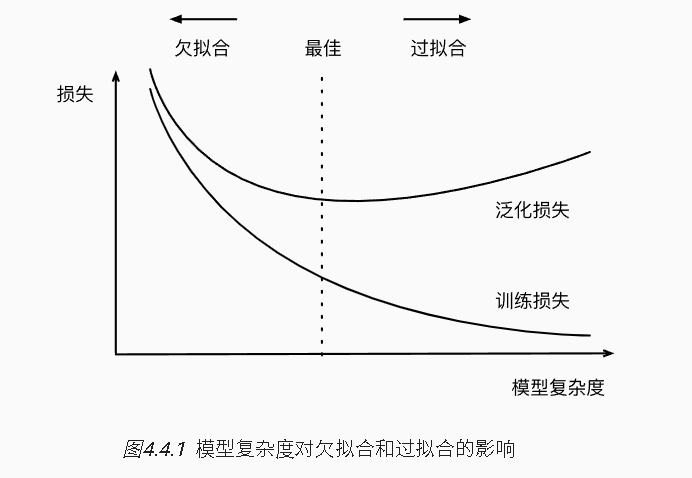

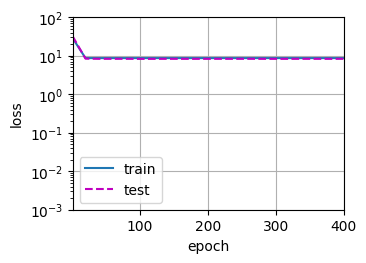
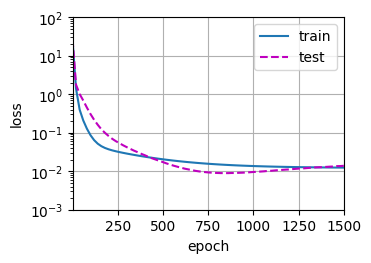



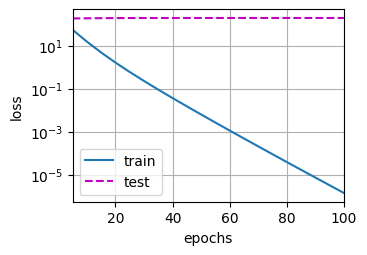

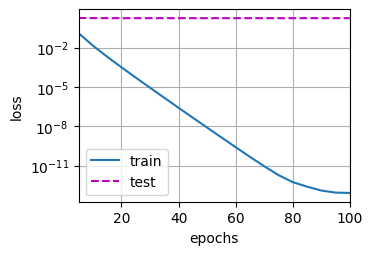
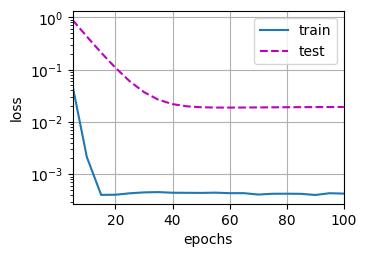

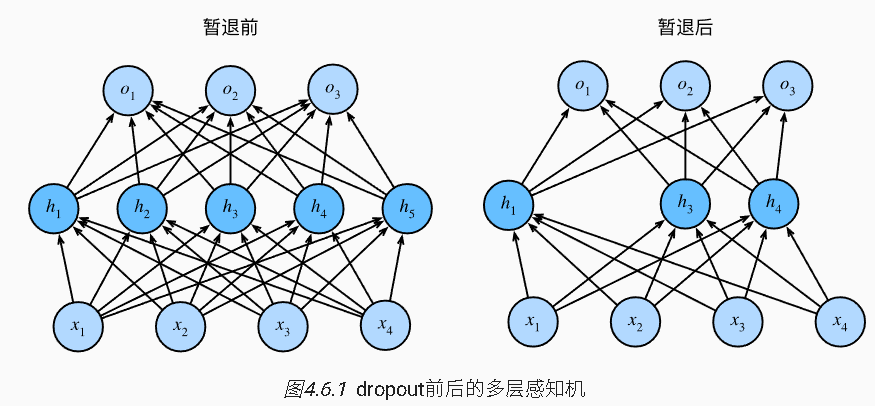

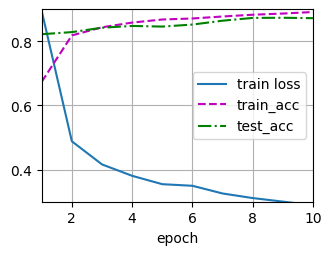

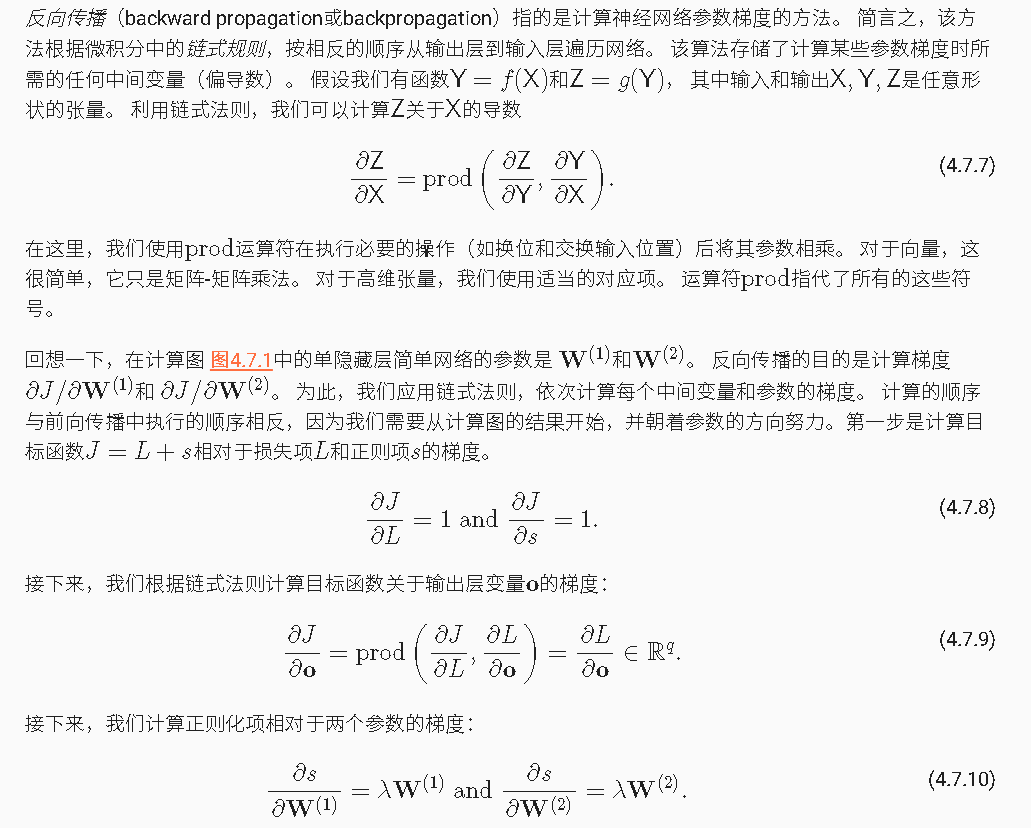
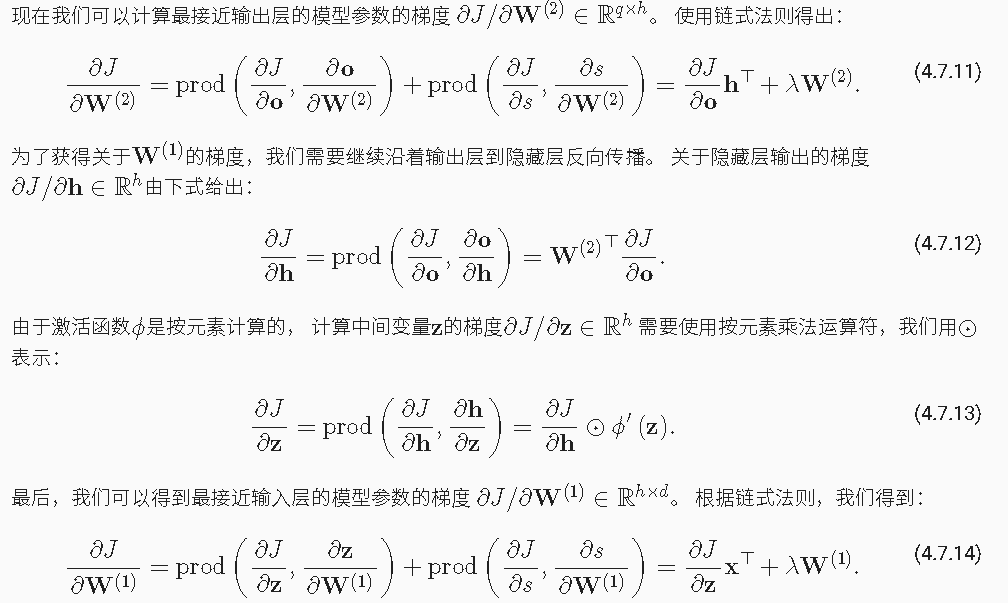





【推荐】国内首个AI IDE,深度理解中文开发场景,立即下载体验Trae
【推荐】编程新体验,更懂你的AI,立即体验豆包MarsCode编程助手
【推荐】抖音旗下AI助手豆包,你的智能百科全书,全免费不限次数
【推荐】轻量又高性能的 SSH 工具 IShell:AI 加持,快人一步
· 阿里最新开源QwQ-32B,效果媲美deepseek-r1满血版,部署成本又又又降低了!
· 开源Multi-agent AI智能体框架aevatar.ai,欢迎大家贡献代码
· Manus重磅发布:全球首款通用AI代理技术深度解析与实战指南
· 被坑几百块钱后,我竟然真的恢复了删除的微信聊天记录!
· 没有Manus邀请码?试试免邀请码的MGX或者开源的OpenManus吧
2021-04-16 1-由浅入深学爬虫